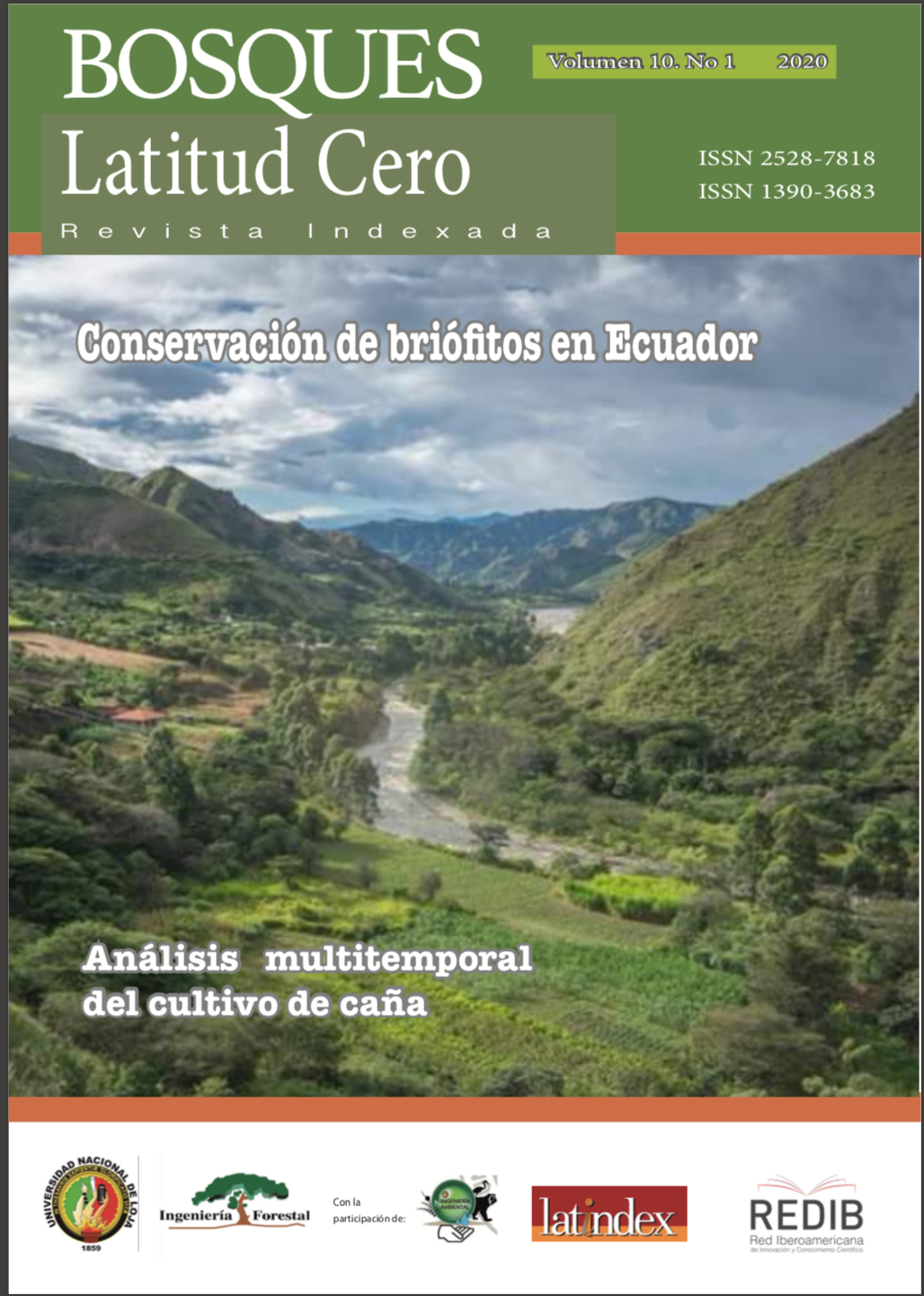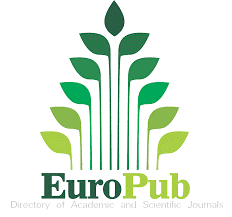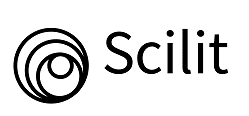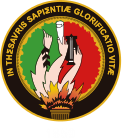Actividad antimicrobiana de extractos de Plumbago scandens L. (Yerba de la culebra)
Palabras clave:
Plumbago scandens L, actividad microbiana, extracto hexánicoResumen
El presente estudio se propuso evaluar la actividad antimicrobiana de los extractos hexánico, etanólico y acuoso de la parte aérea y raíz de Plumbago scandens L. (Plumbaginaceae), planta referida por conocedores populares y sanadores para el tratamiento de diferentes afecciones, particularmente de la piel. Los extractos se obtuvieron secuencialmente de la misma matriz constituida de hojas, raíz y tallos secos pulverizados; los extractos se concentraron a presión reducida a 30, 45 y 55 ºC respetivamente, se liofilizaron y conservaron en refrigeración. La actividad antimicrobiana se evaluó con 10 cepas de microorganismos de la American Type Culture Collection por el método de difusión de Kirby-Bauer modificado en agar Muller Hinton, con discos de papel Whatman Nº 3, de 6 mm de diámetro, a una concentración de 1 mg de extracto por disco. Solo el extracto hexánico, a las concentraciones ensayadas, presentó actividad contra Bacillus subtilis subsp. Spizizenii, Candida albicans, Staphylococcus aureus subsp. Aureus, Streptococcus pneumoniae, Streptococcus pyogenes y Proteus vulgaris Hauser emend y fue negativa para Escherichia coli, Klebsiella pneumoniae, Pseudomonas aeruginosa y Salmonella entérica Typhimurium. Los resultados confirman un amplio espectro de actividad antimicrobiana del extracto hexánico, tanto contra microorganismos Gram positivos y negativos y sobre una levadura, siendo especialmente significativa su actividad contra Bacillus subtilis subsp. Spizizenii, Streptococcus pyogenes y Staphylococcus aureus.Citas
Adegbite, A. A., Adebanjo, A. A., Yusuf-Babatunde, O. A., & Sowole, R. A. (2014). Antimicrobial activity of Plumbago zeylanica plant extracts and its application in water and laboratory disinfection. American Academic and Scholarly Research Journal, 6(6), 55-64. Recuperado de https://www.academia.edu/9650918/Antimicrobial_activity_of_Plumbago_zeylanica_plant_extracts_and_its_application_in_water_and_laboratory_disinfection
Adusei, E. B. A., Adosraku, R. K., Oppong-Kyekyeku, J., Amengor, C. D. K., & Jibira, Y. (2019). Resistance Modulation Action, Time-Kill Kinetics Assay, and Inhibition of Biofilm Formation Effects of Plumbagin from Plumbago zeylanica Linn. Journal of Tropical Medicine, 2019(27 november 2019). https://doi.org/10.1155/2019/1250645
Balouiri, M., Sadiki, M., & Koraichi Ibnsouda, S. (2016). Methods for in vitro evaluating antimicrobial activity: A review. https://doi.org/10.1016/j.jpha.2015.11.005
Bauer, A. W., Kirby, W. M., Sherris, J. C., & Turck, M. (1966). Antibiotic susceptibility testing by a standardized single disk method. American Journal of Clinical Pathology, 45(4), 493-496.
Charles Darwin Fundation. (2020). Plumbago zeylanica. Recuperado 8 de febrero de 2020, de Lista de Especies de Galápagos website: https://www.darwinfoundation.org/es/datazone/checklist?species=16541
Chauhan, M. (2014). A review on Morphology, Phytochemistry and Pharmacological activities of medicinal herb Plumbago zeylanica Linn. Journal of Pharmacognosy and Phytochemistry, 3(2), 95-118. Recuperado de http://www.phytojournal.com/archives/2014/vol3issue2/PartB/33.1-431.pdf
Chhabra, S. C. S. C., Uiso, F. C. C., & Mshiu, E. N. N. (1984). Phytochemical screening of tanzanian medicinal plants. Journal of Ethnopharmacology, 11(2), 157-179. https://doi.org/10.1016/0378-8741(84)90037-0
Cvjetko Bubalo, M., Vidović, S., Radojčić Redovniković, I., & Jokić, S. (2018). New perspective in extraction of plant biologically active compounds by green solvents. Food and Bioproducts Processing, 109(March), 52-73. https://doi.org/10.1016/j.fbp.2018.03.001
Das, K., Tiwari, R. K. S., & Shrivastava, D. K. (2010). Techniques for evaluation of medicinal plant products as antimicrobial agent: Current methods and future trends. Journal of Medicinal Plants Research, 4(2), 104-111. https://doi.org/10.5897/JMPR09.030
Dhale, D. A., & Markandeya, S. K. (2011). Antimicrobial and Phytochemical Screening of Plumbago zeylanica Linn. (Plumbaginaceae) Leaf. Journal of Experimental Sciences, 2(3), 04-06. Recuperado de file:///C:/Users/Usuario/Downloads/Exp Sci 6028-16279-1-PB[1] (Dhale).pdf
Farcio-villarreal, M., Rojas-idrogo, C., Moncada-ascencio, N., Trevisan-Ferreira, D., Pereira Pinto, J., Delgado-paredes, G. E., … Delgado-paredes, G. E. (2015). In vitro tissue culture, chemical composition and biological activity of Plumbago scandens L. Internationa Journal of Applied Biology and Pharmaceutical Techonology, 6(1), 199-209. Recuperado de http://imsear.li.mahidol.ac.th/bitstream/123456789/168482/1/ijabpt2015v6n1p199.pdf
Gallegos Zurita, M. (2016). Las plantas medicinales: principal alternativa para el cuidado de la salud, en la población rural de Babahoyo, Ecuador. Anales de la Facultad de Medicina, 77(4), 327. https://doi.org/10.15381/anales.v77i4.12647
Ganesan, K., & Gani, S. (2013). Ethnomedical and Pharmacological Potentials of Plumbago zeylanica LA. American Journal of Phytomedicine and Clinical Therapeutics, 1(3), 313-337. Recuperado de http://www.ajpct.org/PA-400163-[6].pdf
Hudzicki, J. (2009). Kirby-Bauer Disk Diffusion Susceptibility Test Protocol. En American Society For Microbiology. Recuperado de American Society for Microbiology website: http://www.asmscience.org/docserver/fulltext/education/protocol/protocol.3189.pdf?expires=1489398168&id=id&accname=guest&checksum=B78DE5FED4533FB401BFE82D96E0CABD
Jain, P., Sharma, H. P., Basri, F., Baraik, B., Kumari, S., & Pathak, C. (2014). Pharmacological profiles of ethno-medicinal plant: Plumbago zeylanica l.- A review. International Journal of Pharmaceutical Sciences Review and Research, 24(1), 157-163. Recuperado de http://globalresearchonline.net/journalcontents/v24-1/29.pdf
Jeyachandran, R., Mahesh, A., Cindrella, L., Sudhakar, S., & Pazhanichamy, K. (2009). Antibacterial activity of plumbagin and root extracts of Plumbago Zeylanica L. Acta Biologica Cracoviensia Series Botanica, 51(1), 17-22. Recuperado de https://www.researchgate.net/publication/229091628_Evaluation_of_antibacterial_activity_of_plumbagin_and_the_root_extracts_of_Plumbago_zeylanica_L
Jørgensen, P., León-Yánez, S., & (eds.). (1999). Catalogue of the Vascular Plants of Ecuador. Catálogo de las Plantas Vasculares del Ecuador. En V. Hollowell (Ed.), Monogr. Syst. Bot. Missouri Bot. Gard. (Vol. 75). Saint Louis: Missouri Botanical Garden Press.
Karthika, K. S. M. (2015). Antibacterial activity of plant extract Plumbago zeylanica against clinical bacteria. International Journal of Science, Environment and Technology, 4(6), 1603-1607. Recuperado de www.ijset.net
Malar Tharmaraj, R. J. J., & Marimuthu Antonysamy, J. (2016). Screening of Bactericidal Activity of Selected Plumbago Species Against Bacterial Pathogens. Journal of Microbiology & Experimentation, 2(6), 7. https://doi.org/10.15406/jmen.2015.02.00070
Marreira, E. M., Almeida, P. R. M., Giulietti, A. M., & De Oliveira, R. P. (2017). Flora da Bahia: Plumbaginaceae. SITIENTIBUS série Ciências Biológicas, 17(November 2018). https://doi.org/10.13102/scb2815
Mengane, S. K., & Kemble, S. S. (2015). Phytochemical screening and antifungal activity of Plumbago zeylanica L. International Journal of Pharmaceutical Research and Development, 6(January), 40-42. Recuperado de http://www.ijprd.com/PHYTOCHEMICAL SCREENING AND ANTIFUNGAL ACTIVITY OF PLUMBAGO ZEYLANICA.pdf
Mulugeta, A., Gebremariam, G., & Weldemariam Getahun, Y. (2014). Invitro Antimicrobial Activity of Plumbago Zylanica L. Journal of Natural Sciences Research www, 4(18), 2225-2921. Recuperado de http://iiste.org/Journals/index.php/JNSR/article/viewFile/15860/16357
Nair, S. V., Baranwal, G., Chatterjee, M., Sachu, A., Vasudevan, A. K., Bose, C., … Biswas, R. (2016). Antimicrobial activity of plumbagin, a naturally occurring naphthoquinone from Plumbago rosea, against Staphylococcus aureus and Candida albicans. International Journal of Medical Microbiology, 306(4), 237-248. https://doi.org/10.1016/j.ijmm.2016.05.004
Pant, M., Lal, A., Rana, S., & Rani, A. (2012). Plumbago Zeylanica L.: a Mini Review. International Journal of Pharmaceutical Applications, 3(3), 399-405. Recuperado de http://www.bipublication.com/files/IJPA-V3I32012-4.pdf
Ribeiro, T. G., Chávez-Fumagalli, M. a., Valadares, D. G., Franca, J. R., Lage, P. S., Duarte, M. C., … Castilho, R. O. (2014). Antileishmanial activity and cytotoxicity of Brazilian plants. Experimental Parasitology, 143, 60-68. https://doi.org/10.1016/j.exppara.2014.05.004
Sagar, A., Bala, M., & Prakash, V. (2017). Studies on endophytes and antibacterial activity of Plumbago zeylanica L. International Journal of Multidisciplinary Research and Development, 4(1), 1-4. Recuperado de http://www.allsubjectjournal.com/archives/2017/vol4/issue1/4-1-19
Savithramma, N., Linga Rao, M., & Suhrulatha, D. (2011). Screening of Medicinal Plants for Secondary Metabolites. Middle-East Journal of Scientific Research, 8(3), 579-584. Recuperado de https://pdfs.semanticscholar.org/d2de/129d82c883b8780deb853dd054c2dacbba98.pdf
Sharma, A., & Singh, N. (2015). A multifarious potent herb: Plumbago zeylanica-A mini review. International Journal of Recent Scientific Research, 6(6), 4825-4829. Recuperado de http://www.recentscientific.com/sites/default/files/2736.pdf
Sharma, N., & Kaushik, P. (2014). Medicinal, Biological and Pharmacological Aspects of Plumbago zeylanica (Linn .). Journal of Pharmacognosy and Phytochemistry, 3(4), 117-120. Recuperado de http://www.phytojournal.com/vol3Issue4/Issue_nov_2014/12.1.pdf
Sharma, S., Yadav, D. P., Singh, B., & Chhipa, R. C. (2012). Antimicrobial activity of the Soxhlet extraction of Plumbago zeylanica leaf extracts in-vitro conditions. Research Journal of Pharmacy and Technology, 5(October), 1320-1322. Recuperado de https://www.academia.edu/6042777/Antimicrobial_activity_of_the_Soxhlet_extraction_of_Plumbago_zeylanica_leaf_extracts_In-vitro_conditions
Shweta, S., & Dubey, S. (2015). Antimicrobial Activity of Leaves Extract of Plumbago Zeylanica Plant against Known Drugs" International Journal of Research Studies in Biosciences, 3(6), 1-6. Recuperado de www.arcjournals.org
Silva, T. F., & Oliveira, A. B. de. (2016). Plantas leishmanicidas da Amazônia Brasileira: uma revisão. Revista Fitos, 10(3), 339-363. https://doi.org/10.5935/2446-4775.20160026
Singh, M. K., Pandey, A., Sawarkar, H., Gupta, A., Gidwani, B., Dhongade, H., & Tripathi, D. K. (2017). Methanolic Extract of Plumbago Zeylanica - A Remarkable Antibacterial Agent Against Many Human and Agricultural Pathogens. Journal of pharmacopuncture, 20(1), 18-22. https://doi.org/10.3831/KPI.2017.20.004
Srivastava, S., Mishra, J., Kumar Gupta, A., Singh, A., & Singh, S. (2017). Laboratory confirmed miltefosine resistant cases of visceral leishmaniasis from India. Parasites and Vectors, 10(49), 2-11. https://doi.org/10.1186/s13071-017-1969-z
Subhash, K., Wabale, A. S., & Kharde, M. N. (2013a). Phytochemical Screening and Antimicrobial Studies on Plumbago. Advances in Bioresearch, 4(September), 115-117. Recuperado de http://soeagra.com/abr/abrsept_2013/22.pdf
Subhash, K., Wabale, A. S., & Kharde, M. N. (2013b). Pytochemical Screening and Antimicrobial Studies on Plumbago zeylanica L. Adv. Biores, 4(3), 115-117. Recuperado de http://www.soeagra.com/abr/abrsept_2013/22.pdf
Tinitana, F., Rios, M., Romero-Benavides, J. C., de la Cruz Rot, M., & Pardo-de-Santayana, M. (2016). Medicinal plants sold at traditional markets in southern Ecuador. Journal of Ethnobiology and Ethnomedicine, 12(1), 1-18. https://doi.org/10.1186/s13002-016-0100-4
Valverde Badillo, F. de M. (1998). Plantas útiles del litoral ecuatoriano (Primera). Guayaquil: Ministerio del Ambiente de Ecuador, Editorial Jumandi.
Descargas
Publicado
Cómo citar
Número
Sección
Licencia
Esta obra se publica bajo la licencia Creative Commons Atribución-NoComercial-CompartirIgual 4.0 Internacional (CC BY-NC-SA 4.0). Esto significa que los usuarios pueden copiar, distribuir y adaptar el contenido, siempre que se otorgue el crédito adecuado a los autores y a la revista. No se permite el uso comercial del material. Además, cualquier obra derivada debe distribuirse bajo la misma licencia. Esta licencia garantiza el acceso abierto al conocimiento, promoviendo la difusión y reutilización de los trabajos publicados sin fines de lucro, respetando la autoría y asegurando la libre circulación del contenido en términos equitativos.






























